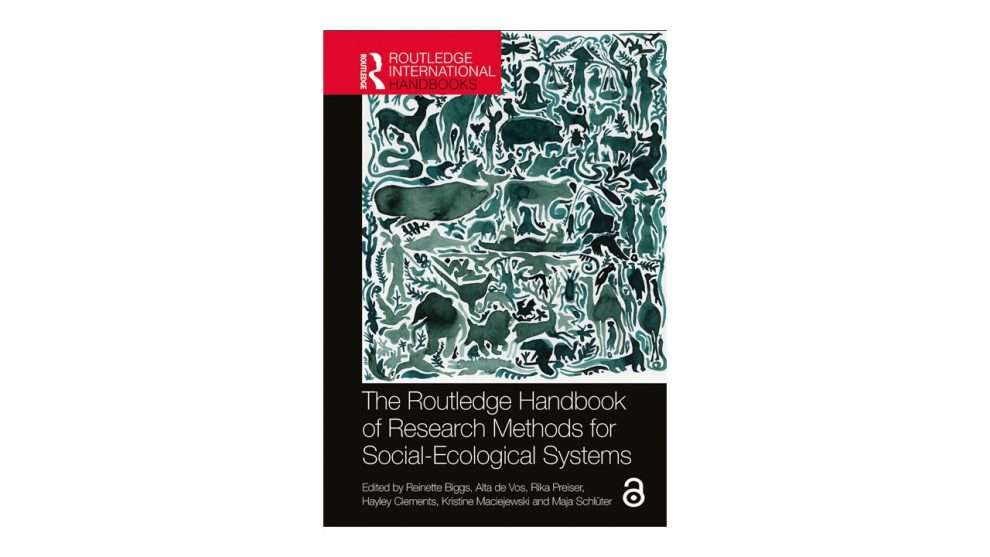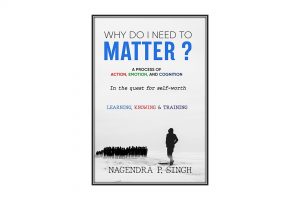Reinette Biggs, Alta de Vos, Rika Preiser, Hayley Clements, Kristine Maciejewski and Maja Schlüter (Eds.)
ISBN: 978-0-367-89840-3 (hardback)
Routledge 2022
Pages: 527
Open Access: https://doi.org/10.4324/9781003021339
I started reading about Social-Ecological Systems (SES), concepts, and research during my PhD research on Mapping Climate Change induced Dairy Innovations, Vulnerability, and Trade-offs in 2013-16. Then I understood that I could only develop an index to map the vulnerability of stakeholders by considering the system as a whole. Even though I got plenty of literature on climate change concepts, I could not get much matter on SES. After reading this handbook, when I look back, I now understand what I was mystified and confused about at that time.
SOCIO-ECOLOGICAL SYSTEMS
‘Social-ecological systems’ (SES) is an emerging concept that helps one understand the intertwined nature of human and natural systems in a new, interconnected and interdependent way. The SES concept was developed in the early to mid-1990s. The idea of SES is based on the notion that ‘the delineation between social and natural systems is artificial and arbitrary,’ emphasizing that people and nature are intertwined. Nature no longer merely sets the space in which social interactions occur; likewise, people are not just external drivers in ecosystem dynamics. Therefore, SES are not simply social plus ecological systems but cohesive, integrated systems characterized by strong connections and feedback within, and between, social and ecological components that determine their overall dynamics. The inter-subjective nature of knowledge of SES as studied by different philosophical schools, needs to be better integrated into the study and management of agricultural systems. Thus, the need to understand complex systems in a better way is gaining traction all over the world.
HOW THE BOOK IS ORGANISED?
The book is divided into three parts. Part 1 focuses on the basics of SES, SES research, complexity, practice, design of SES research, and how to use this handbook. This part aims to clarify and synthesize this plurality by providing an introduction to SES research It goes on to deal with data generation and systems coping methods, methods for analysing systems – system components and linkages, system dynamics, directly informing decision-making. Part 2 intends to clarify the diversity of methods currently used in the field, probes deeper into the implications of a complex adaptive systems-based approach for SES research, and research methods. The third part clarifies the synthesis and emerging frontiers in social-ecological systems research methods. This final chapter (Part 3) delineates the current landscape of SES methods. The chapter critically replicates the procedures with regard to their ability to address systemic features of SES and discusses some of the most common methodological challenges given the complex adaptive and intertwined nature of SES. This part explains the methodological gaps and discusses novel methods and method combinations that may help address these gaps, and thus moves the field forward.
WHAT IS THE BOOK, AND WHO SHOULD READ IT?
The book is an introductory guide to social-ecological systems (SES) research methods, a trending topic within the emerging domain. The book is useful for a wide variety of graduate students, lecturers, researchers, and those working in ecology, marine science, political science, economics, anthropology, and anthropology journalism. The book has been written in a style that is accessible to readers entering the field from diverse disciplinary backgrounds, bridging the gap between knowledge and action. It provides the stakeholders a foundation in SES and a basic introduction to SES research methods. It has prompted the development of various short courses since SRC’s inception. These challenges have been echoed by SES researchers from a wide range of institutions worldwide, and within critical SES research networks, including the international Programme on Ecosystem Change and Society (PECS) and the Resilience Alliance (RA). This handbook aims explicitly to meet this need and is the first broad introduction to SES research methods in this field. Thus, it’s a reference guide for all researchers in the social science discipline, particularly those interested in SES-based research. As an introductory guide, those struggling to find relevant research topics in Social Sciences can go through the book to see whether this area interests you.
The book says that many researchers engage in SES research because they are passionate about addressing the intertwined social and ecological sustainability issues facing society. Therefore, SES research often requires more significant transdisciplinary initiatives where the lines between research and action are blurred. Any engagement with change processes on the ground requires a thorough understanding of the issues, history, and context of the particular place where one is working and the diverse actors involved. Engaged SES research is conducted at scales ranging from local areas to the global commons, recognizing that SES are indeed intertwined across temporal and spatial scales. This book discusses SES research methods that span these scales and contexts, focusing on approaches used in SES research, rather than primarily in SES governance or management contexts.
A fascinating fact I learnt from this book is that although livelihood analysis and vulnerability analysis have been around for a long time, these approaches and tools are being used in cutting-edge SES work, fostering new applications and refinements of the tools themselves. Although five asset classes are integral to the sustainable livelihoods framework, most studies do not quantify each type equally. Still, they tend to focus on one or two more than on any of the others. Historically, natural and financial capital have received the most attention, but there are renewed efforts to develop and apply social or human capital indices. This is fostering some innovative uses of social network analysis within livelihood and vulnerability framings. Providing equal attention to all asset classes reinvigorates debate on their substitutability.
Another critical area is applying the tools in longitudinal studies so as to understand better how livelihoods and vulnerability are changing, for whom and what is driving these changes. Chapter 11 of the book details how this inevitably leads to merging livelihood and vulnerability approaches together with scenarios. Furthermore, there is an increasing realization of the need to disaggregate vulnerability assessments and livelihood strategies and outcomes between specific groups, such as by gender, by the size of landholding, by wealth classes, and by proximity to actual resources. Livelihood and vulnerability approaches are also finding greater application in urban contexts taking into account urban residents’ reliance on urban green infrastructure for various capitals, or for coping with or developing resilience in times of heightened vulnerability.
SUMMARY
The book concludes with the fact that no single method can by itself capture all aspects of complexity and interconnectivity. Some methods are more limited in their ability to account for complexity because of their underlying epistemology. Others are more flexible or are based on a complex perspective, such as network analysis, dynamical systems modeling, agent-based modeling, and the many methods for effecting system change in co-production processes. A better understanding of the conceptual foundations, strengths, and limitations of approaches and techniques can support an assessment of their suitability for a problem or issue of interest. Furthermore, the diverse perspectives that characterize SES research and the different strengths and limitations of methods call for pluralist and integrative approaches that combine or contrast other ways to take advantage of their distinctive strengths and weaknesses. However, the theoretical commitments and epistemologies underlying different strategies need to be navigated with care as they may involve incompatibilities.
SES research diverges from the tradition of the lone genius. Instead, researching and engaging in SES is an inherently collaborative and integrative endeavour across disciplines, knowledge systems, and science and practice. This does not mean that every research endeavour is necessarily team research; however, every researcher will most likely engage with various perceptions and methods from diverse worldviews and epistemologies. But a plurality of approaches is needed to deal with the complexity and interconnectivity of SES; these processes require careful engagement and communication and a reflexive practice of doing research and engaging with other researchers and stakeholders. Ultimately, studying SES and affecting change leading to sustainability is a continuous learning process. Social-ecological systems are continuously changing, as is our understanding of them.
The difficulty I faced while reading the book is that the bookmarks could have been more elaborate in PDF as it’s a bulky one. Locating individual chapters in each part is time-consuming. Keeping that aside, this book will inspire several young researchers to delve more into the theme of SES theory and research.
 Dr Aparna Radhakrishnan, works as Assistant Professor (Agricultural Extension), Agricultural Information and Sales Centre, Kozhikode, Kerala Agricultural University. She did her PhD from ICAR-NDRI, Karnal, in Agricultural Extension, worked with IIT Delhi and SM Sehgal Foundation Gurgaon post-PhD before joining KAU. She can be reached at aparna.r@kau.in.
Dr Aparna Radhakrishnan, works as Assistant Professor (Agricultural Extension), Agricultural Information and Sales Centre, Kozhikode, Kerala Agricultural University. She did her PhD from ICAR-NDRI, Karnal, in Agricultural Extension, worked with IIT Delhi and SM Sehgal Foundation Gurgaon post-PhD before joining KAU. She can be reached at aparna.r@kau.in.





Add Comment